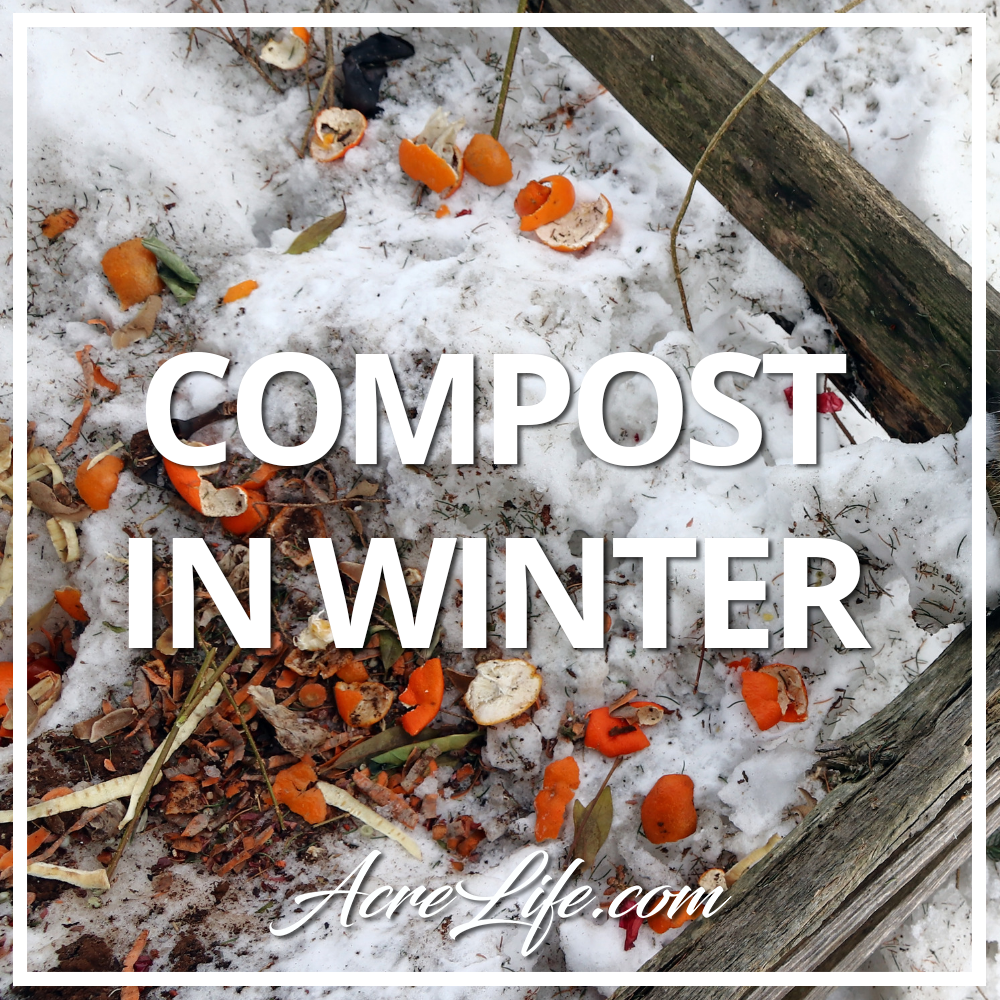Composting In The Winter
For me composting is a little like recycling, once you start you become obsessed. I’ll admit I used to laugh at people who recycled. We used our little blue tubs that the city provided for recycling as storage bins in our garage. But that has changed. Maybe it’s getting older (and hopefully wiser) that brought on the change. I was so excited when our waste management company delivered our recycling bin. It’s the same size as our regular trash cans!!! They only pick it up every other week and it is FULL when they come.
Back to composting. I love the idea of getting the most out of my work. Composting the food I grow and even the food I buy provides a full circle of benefit. I am rewarded by cutting the cost of buying fertilizer and my soil is rewarded with nutrients that are free from chemicals. Everyone and everything wins!
Can you compost in the cold?
The main component to a successful compost is heat. So can you compost in the cold? The answer is yes but there are a few factors that have to occur.
- You need to live in a warmer climate with mild winters or
- You may need to insulate your bin or put it inside of a shed
- Start your compost in a plastic trash bin with a lid or
- Purchase a composting box
Choose a sunny spot and begin to gather your dry brown material. Make sure that whatever container you use has the ability to allow some rain and wind to reach your compost. If it doesn’t have holes in it you may need to add water or extra green material to keep it damp.
Dry Brown Material
Just like hot composting, cold composting needs a generous amount of dry brown material. Brown material adds carbon and bulk to your compost. Shredding any of these materials will help speed up the process and prevent clumping.
- Dry leaves are in great supply right now
- Grass clippings from your final mowing
- Straw and hay
- Shredded paper or cardboard
- Cornstalks
Bonus: Think about putting your really cute fall porch decorations in the compost pile after Thanksgiving. Then you won’t feel like you wasted money.
Green Material
You will need to layer your brown and green material into your composting container. Green material isn’t necessarily “green” it’s just material that is wet or has been living recently. Green material adds nutrients to your compost and is high in nitrogen.
- Weeds that you cleaned out of your garden
- Grass clippings if your lawn is still growing
- Fruit and vegetable scraps
- Ground up eggshells
- Manure from the chickens or other barnyard animals
- Coffee grounds and tea bags
Putting It All T
You will want to have a ratio of about 4 parts brown to 1 part green in your compost. Don’t stress about the ratio. If your compost gets too dry add some extra green material. If it gets too wet add some brown material. Decomposition is going to happen with or without you. Your job is to help it along by adding what your mixture needs.
Depending on your method of storage you may need to turn your compost. However, since it’s winter and everything is moving slower, you can just continue to layer your material and know that you have several months until you are going to need that compost.
What kind of compost bin do you use?
